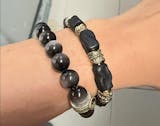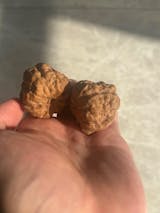What is Thangka Art
Navigation
- What is a Thangka?
- Composition of Thangkas
- Meaning in Thangkas
- the World's Largest Thangka
- Conclusion
Have you ever heard "Thangka" art? If not, this post will guide you what is Thangka and introduce you the largest Thangka in the world.

What is a Thangka?
In the Tibetan language, Tang signifies a "flat and expansive space," while Ka refers to the act of applying colors to a blank space. Together, they convey the idea of depicting colors on a flat and blank surface.
A Thangka is like a portable painting, usually created on cotton or silk, that often shows a Buddhist god, scene, or mandala. Unlike regular paintings in frames, Thangkas are mounted on special fabric and can be easily rolled up. They are usually small and monks carry them to rituals or ceremonies. Thangka paingtings are designed to help people meditate and visualize during their Buddhist practices. In Tibetan Buddhism, these paintings are highly meaningful, acting as visual aids for teachings and meditation.

Composition of Thangkas
Thangkas follow specific rules based on Buddhist texts. The size, layout, and placement of figures and scenes must adhere to precise measurements. Thangkas typically have solid color backgrounds or simple landscapes. The main Buddhist figures are placed in the foreground, surrounded by symbolic elements like lotus flowers or jewelry. The size and position of these items convey spiritual significance. The composition uses diagonal lines to guide the viewer's eyes, and figures are repeated in symmetrical patterns to aid meditation.
Meaning in Thangkas
Thangkas are rich in symbolism through colors, hand gestures, poses, and objects. Each detail has a specific meaning. Blue backgrounds symbolize purity, while lotus flowers represent enlightenment. Buddhas holding begging bowls signify humility, and jewelry represents wealth and power. Hand positions, known as mudras, convey wisdom or the turning of Buddhist wheels. Poses like sitting in lotus position or with raised hands tell stories according to Buddhist beliefs. Thangkas are not just paintings but they are intricate visual guides to understanding and practicing Buddhism.

the World's Largest Thangka
In the Qinghai Tibetan Culture Museum, there is a giant Thangka that spans an impressive 618 meters, weighs over 1 ton. Titled "Chinese Tibetan Culture Art Painting Grand View," it measures 618 meters in length, 2.5 meters in width, with an area exceeding 1500 square meters and a weight of over 1000 kilograms. The scroll features over 700 Thangka patterns meticulously created by more than 400 top artists from five provinces and regions: Qinghai, Tibet, Gansu, Sichuan, and Yunnan. The artists include Tibetan, Tu, Mongolian, and Han ethnicities. The creation of the "Grand View" took 27 years from planning to completion, showcasing the profound understanding and splendid imagination of the Tibetan people towards nature, humanity, and society. This spectacular scene is worth witnessing at least once.

Conclusion
Thangka paintings are intricate silk or cotton religious paintings that originate from Tibetan Buddhism. At first glance, these colorful works can seem mystifying for those unfamiliar with their complex iconography. By reading their intricate symbolism from this post, we can better understand and appreciate Thangkas as sacred tools meant to inspire reflection and guidance along the path to nirvana.

























































